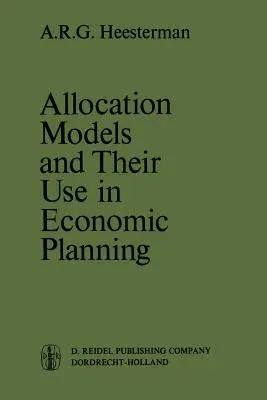Aaart R Heesterman
(Author)Allocation Models and Their Use in Economic Planning (Softcover Reprint of the Original 1st 1971)Paperback - Softcover Reprint of the Original 1st 1971, 17 October 2011

Qty
1
Turbo
Ships in 2 - 3 days
In Stock
Free Delivery
Cash on Delivery
15 Days
Free Returns
Secure Checkout
Part of Series
International Studies in Economics and Econometrics
Print Length
203 pages
Language
English
Publisher
Springer
Date Published
17 Oct 2011
ISBN-10
9401030863
ISBN-13
9789401030861
Description
Product Details
Author:
Book Edition:
Softcover Reprint of the Original 1st 1971
Book Format:
Paperback
Country of Origin:
NL
Date Published:
17 October 2011
Dimensions:
23.39 x
15.6 x
1.17 cm
ISBN-10:
9401030863
ISBN-13:
9789401030861
Language:
English
Location:
Dordrecht
Pages:
203
Publisher:
Weight:
312.98 gm

